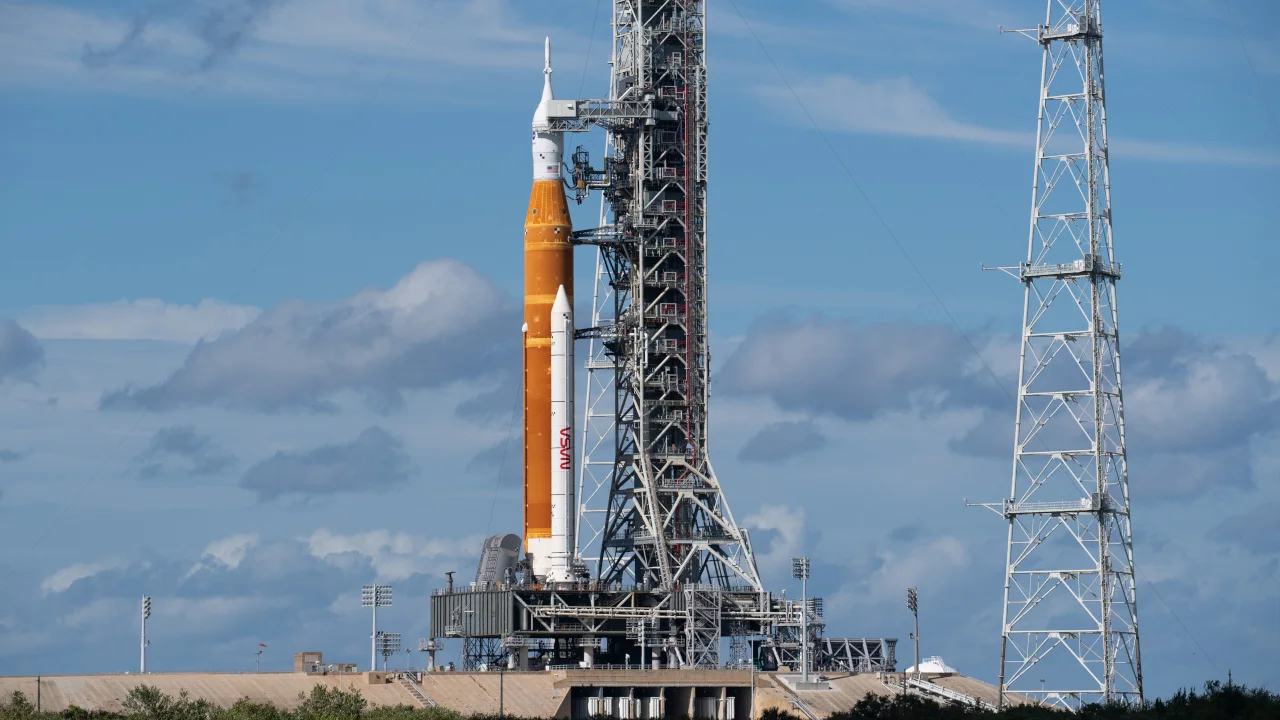
NASA says Artemis 1 ready for launch after weathering Hurricane Nicole
Although the rocket was blasted by powerful winds, it came out relatively unscathed and should be ready for its upcoming launch date.
Now that Hurricane Nicole has passed, NASA has assessed the impacts on their Artemis 1 mission, and the rocket appears ready to launch to the Moon!
Having weathered the passage of Hurricane Nicole on Wednesday and Thursday, Orion and the Space Launch System (SLS) suffered only some minor issues. As a result, NASA is confident they can proceed towards a November 16 launch date for Artemis 1's roughly 25-day trip in space.

Artemis 1 sits on the launch pad on November 11, 2022, following the passage of Hurricane Nicole. Credit: NASA
As of Wednesday morning, then-Tropical Storm Nicole packed sustained winds of up to 112 km/h and would achieve Hurricane 1 strength, with wind speeds of around 120 km/h, overnight into Thursday. The storm made landfall just south of the Space Coast, which put Kennedy Space Center directly in the path of some of the strongest winds that Nicole could muster.
The US Space Force 45th Weather Squadron forecast for Cape Canaveral and Kennedy Space Center was calling for wind speeds overnight from Wednesday to Thursday of up to 74 km/h, with gusts up to 101 km/h. These were well below what Artemis 1 could endure.
Read more: NASA's Moon rocket to 'ride out' potential hurricane Nicole
As the storm passed, sensors on the three 182-metre lightning towers that surround the launch pad recorded wind speeds the rocket was actually subjected to. According to the National Weather Service, some of those records exceeded the forecast and NASA's stated limits for the rocket. This included, at one point, a 160 km/h wind gust.

Artemis 1 sits on the launch pad on March 18, 2022, surrounded by three 182-metre lightning towers that protect the rocket from strikes and help to record weather conditions at the site. Credit: NASA/Kim Shiflett
However, during a press conference on Friday, Jim Free, associate administrator for NASA's Exploration Systems Development Mission Directorate, clarified that the rocket's 138-kph wind tolerance is for speeds measured at only around 12 metres above the ground. In contrast, the winds measured by the lightning tower sensors were at roughly ten times that height (over 120 metres up).
Wind speeds naturally increase with height, as friction with the ground factors in less the higher you go. Plus, the change in wind speed with height is something that we've been modelling with equations and computers for some time. So, when you scale that 160 km/h wind gust down from a height of 120 metres to what it would have been at just 12 metres, it apparently still fell within the limits the rocket could endure.
When the Artemis team examined the launch site and the rocket on Friday, they found a few minor issues. For example, there was a tear in the engine rain covers, some loose caulk, and water in the crew access arm. Additionally, there were issues with an umbilical between Orion and the SLS. So, while they have some work to address those problems, Orion and SLS came out of Hurricane Nicole relatively unscathed.
"There's nothing preventing us from getting to the 16th," Free said during the briefing.
NASA anticipates that the mission will be ready for a launch attempt at 1:04 a.m. EST on Wednesday, November 16. However, if they need more time, a backup launch date is set for Saturday, November 19.










